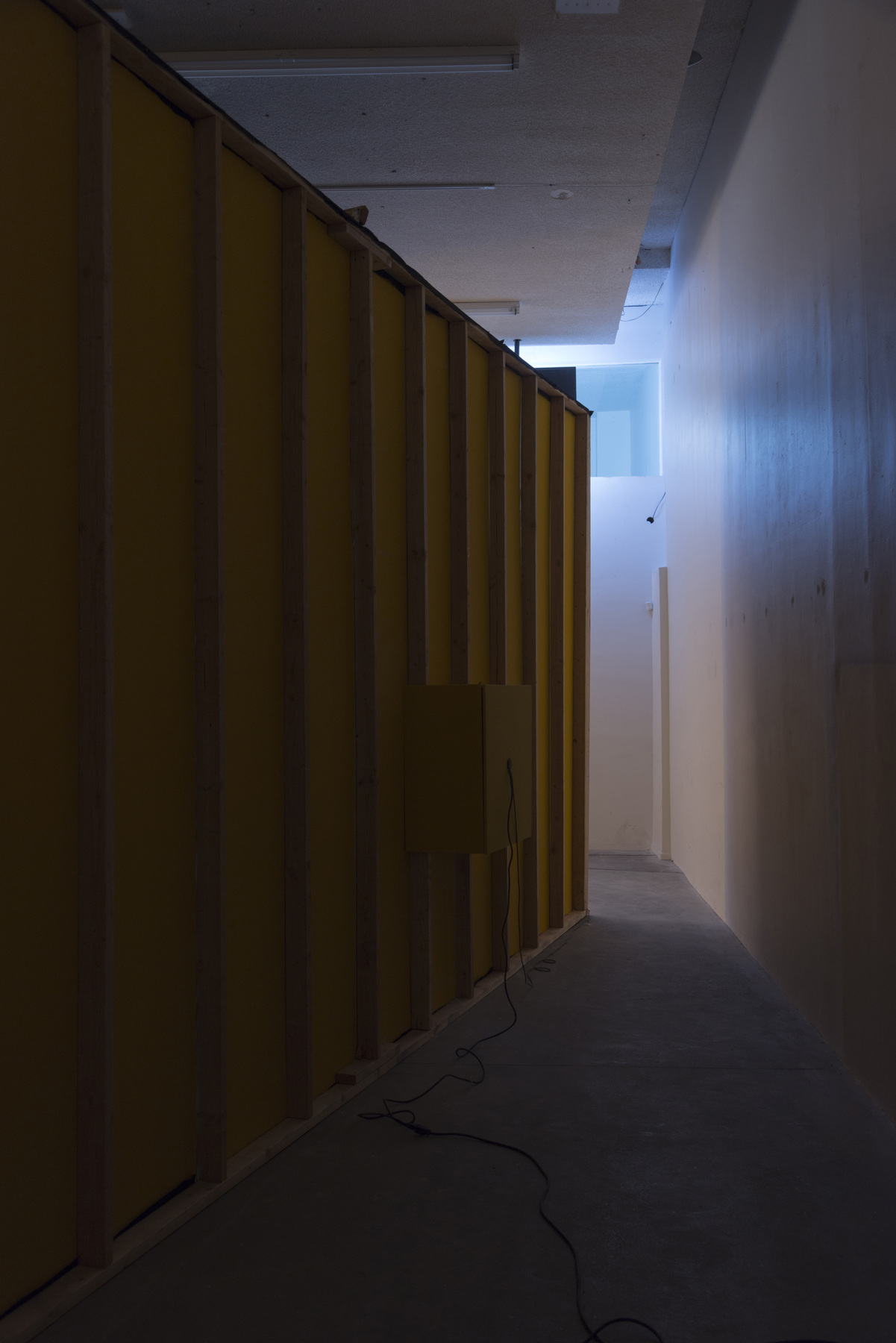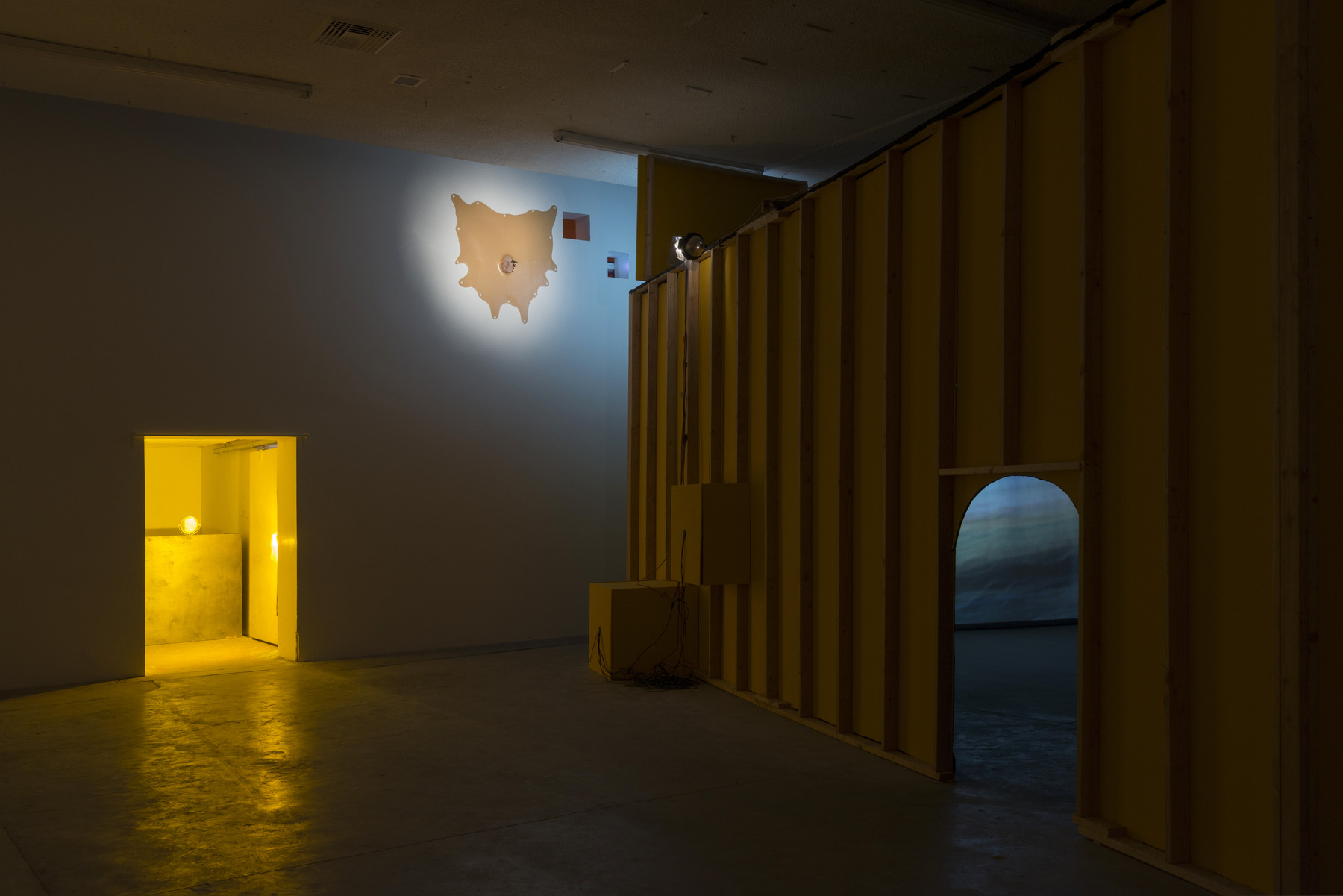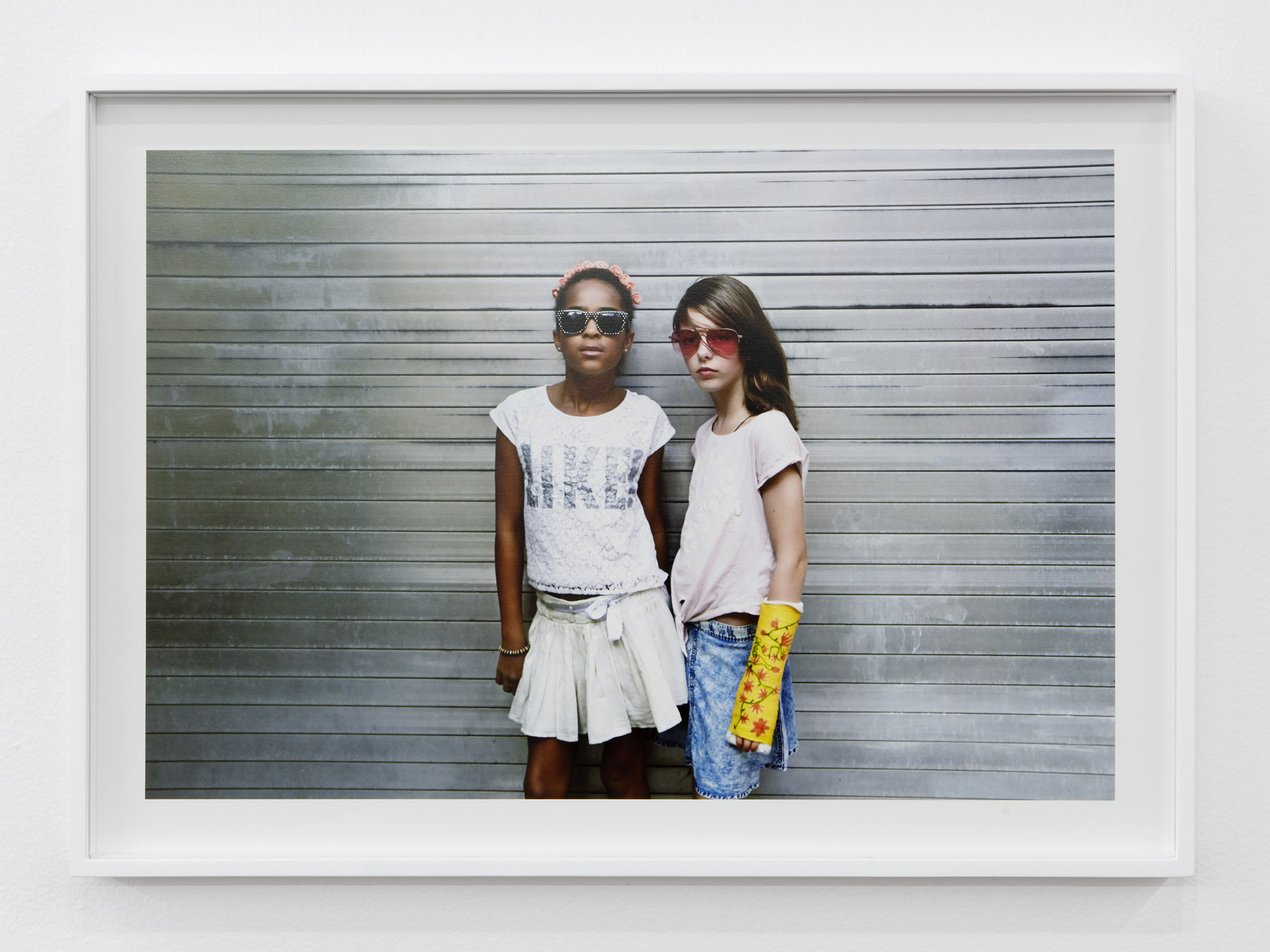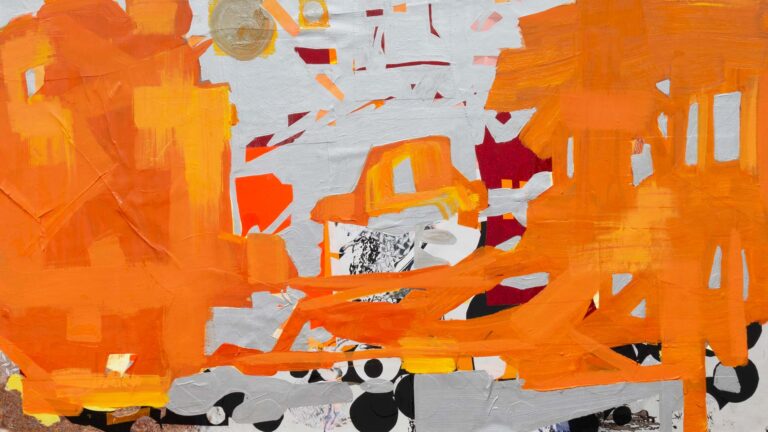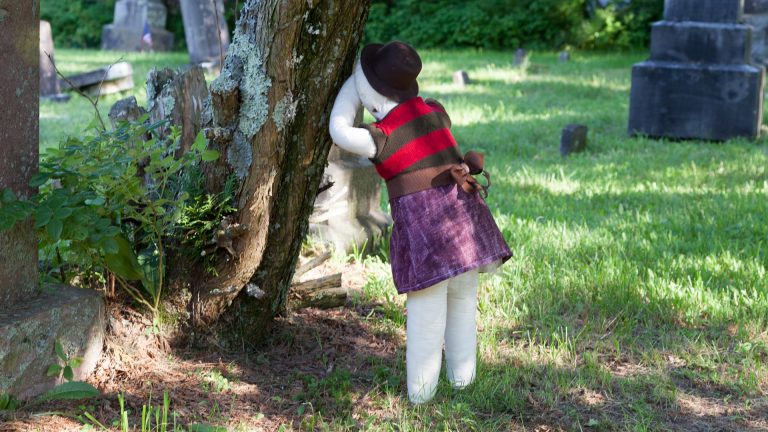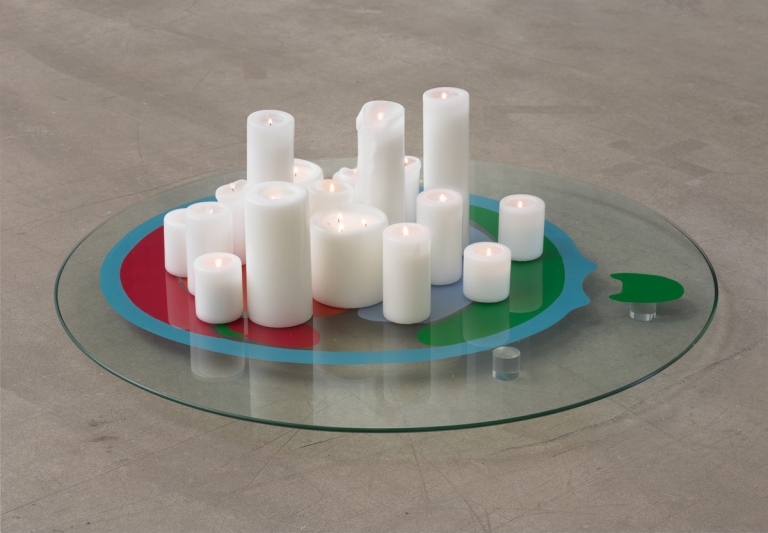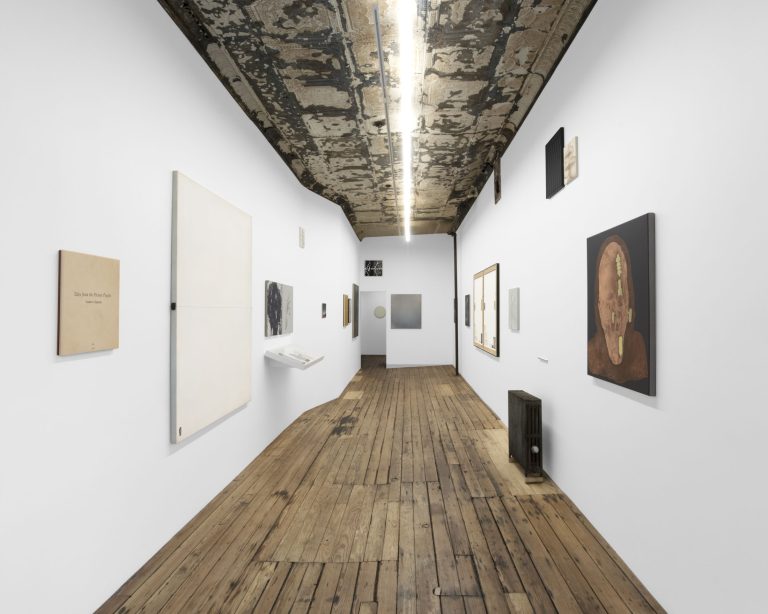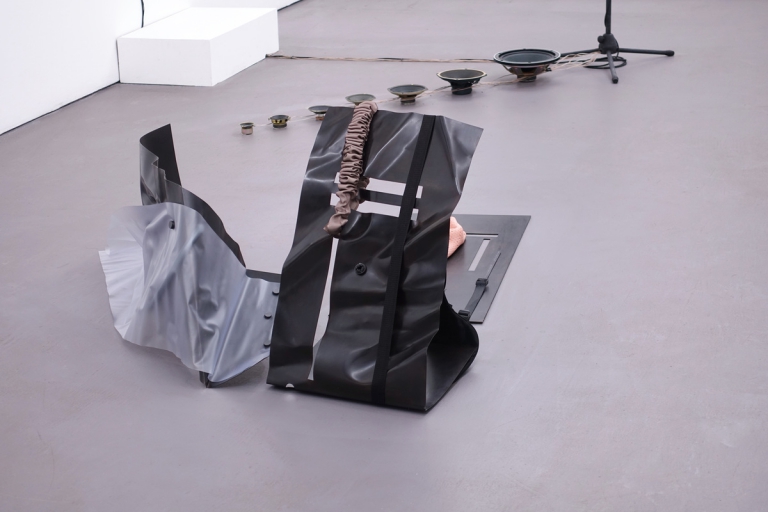Artist: Andrew Norman Wilson
Exhibition title: Pre-tense
Venue: Human Resources, Los Angeles, US
Date: October 6 – 20, 2017
Photography: all images copyright and courtesy of the artist and Human Resources, Los Angeles
Through the use of puppets both computer-generated and hand-made, the recent work of Andrew Norman Wilson stages inescapable narrative scenarios in which rational thought becomes contradictory and human exceptionalism unravels. Drawn from the popular imagination, the videos’ anthropomorphized characters mimic our emotions and behavior while exploiting the illusory and uncertain qualities of puppetry. In the words of the artist, “Being a person means being paranoid that you might be a puppet of some other force, like economic networks or algorithms or genetic coding.” Divided, replicated, transposed, and multiplied, Wilson’s puppets are subjected to biological and computational functions within infinitely looping narratives where perceptual play reigns and human reason offers no escape.
The Unthinkable Bygone (2016) was the first project Wilson developed in collaboration with the animator Vlad Maftei, whose experience includes realistic simulations of vital organs for the healthcare industry as well as the limitless elasticity of a 4D Spongebob Squarepants film. For Wilson, such overlaps of scientific visualization and popular cinematic technique are a key site for understanding science as a cultural practice that offers information about matter without revealing a consciousness-piercing truth. Together Wilson and Maftei created a 3D model of Baby Sinclair from Jim Henson’s animatronic puppet TV series Dinosaurs (1991-94) and subjected him to varied forms of scientific analysis, including simulation, dissection, reflection, and endoscopy. What emerges is an infinite loop in which speculation on an organism’s intelligence, experience, and points of view inevitably reveal the influence of cinematic and televisual convention, and leave us knowing less than we did at the beginning of the experiment.
Reality Models (2016) is a shot-by-shot recreation of a scene from “Peppermint Park,” an educational home video series produced in the 1980s by a group of investors seeking to profit off the narrative models that “Sesame Street” invented for educational children’s entertainment. A s the artist recounts, “Growing up, a family friend had several copies of the VHS tapes and I remember being terrified of an unexplained dance sequence by a breakaway puppet dressed to look like a scarecrow. A few years ago, clips from the show resurfaced online, and my relationship with the dancing scarecrow has shifted from horror to obsession.” Wilson added a backstage scene that reveals the puppet as h is own puppeteer. Inspired by a 2010 experiment by the physicist Aaron O’Connell, the scene dramatizes the discovery that an object visible to the naked human eye can be in two places at once, thus demonstrating the influence of quantum physics on objects larger than atoms. In his essay on the video, Wilson writes, “From here it starts to seem like existing means being inconsistent, while dying means becoming consistent. Or that classical logic – where things are either A or B , but never A and B at the same time – is being replaced by a quantum logic which says t hat all future possibilities exist i n the p resent.” O ne could say t he narrative operates analogically to that idea. Or, it’s a demonstration of how, in cinema and literature, narrative closure occurs when plot and story arrive at a 1:1 ratio: consistency. At its most basic, it’s the s tory of an artist torn between their public persona and the private struggle of day-to-day survival. Whatever it means, Reality Models is about just that: whatever it means. In the words of O’Connell, “People have models of reality, and those models are descriptions, but they d on’t get you any closer to the truth.”
Ode to Seekers 2012 (2016) was the second project Wilson developed in collaboration with Maftei and was initially conceived during treatment at Rockland Psychiatric Center in Orangeburg New York, which contains the abandoned children’s ward seen in the video. Loosely based on John Keats’ poem “Ode on a Grecian Urn” (1820), the work emerges from a translation of the formal techniques of Keats’ textual ode to an infinitely looping video. Ekphrasis – the graphic, dramatic description of a visual work of art – shifts from Keats’ urn and the celebratory scene it depicts to an abandoned children’s ward at a mental institution and a computer-generated scene composed by Wilson and Maftei. “What mad pursuit? What struggle to escape? What pipes and timbrels? What wild ecstasy?” The questions that Keats asks of the images on the urn are visually translated for the viewer of Seekers , transposing the poet’s queries to a scene in which a mosquito, a syringe, and an oil pump all thrust their piercers into a surface that looks at once like human skin under a microscope, desert salt flats, and potato casserole. Sifting through the artist’s experiences with mosquito-borne illness, drug addiction, and climate change, the work operates as both a questioning of and a testament to the choice to continue to make art, or do anything at all, when every attempt to love, desensitize, or survive inevitably entails traumatic destruction.
A sculpture entitled Robin Williams Window Shade (2015) is mounted in the former cinema. The artist bought a resin cast of Robin’s head from a Hollywood prop studio that was made when the actor was still alive. Face casts seem to anticipate a person’s death – they not only require the person to “play dead” during the making of the mold, but they also outlive the person, turning their form into a replicable commemoration. Wilson 3D-scanned the cast and worked with a 3D modeler to open its eyes and make it grimace in the way Robin Williams was known to do. He also 3D-scanned an alligator clip that the modeler used to pinch his eyebrow within the software. The clip, but not its effect, was then removed and the model was 3D printed and thrust through a hole in a piece of faux leather. As with the baby dinosaur from The Unthinkable Bygone , Wilson picks up traces of forms, copies of copies, and attempts to reanimate the affect of their source towards atypical ends. He writes, “With the face print in my hands, I am ecstatic. Then, a feeling that something was always absent, regardless of the fact that it’s a faceprint of a faceprint of a faceprint of a face. Like any object itself, Robin himself was never an adequate expression of his actual existence. In person, he sparkled with the same mysterious absence as this powder print in my hands, or as in the projection I saw of Mrs. Doubtfire’s face, covered in cake icing, yelling ‘toodaloo’ from behind a refrigerator door. The object is mournful – it holds on to the feeling of something slipping away. It’s about being respectful, being true, but knowing that you are losing something. Treasuring an illusion, while kissing it goodbye.”
Mosquito Computer (2015-2017) is a custom computer case that has been modified to house multiple generations of mosquitoes over the course of an art exhibition. Inside the case is a mosquito colony, a hard drive enclosure with a small pond inside for larvae to grow, and another hard drive enclosure filled with tree resin that serves as both a food supply and a preservation medium for dead mosquitoes. The multi-generational family drama On Golden Pond (1981) is projected onto the case to serve as visual stimuli for the mosquitoes. Over the course of the exhibition, the female mosquitoes are fed blood meals sourced from the artist’s veins to afford them the protein they need to make their eggs. These blood meals also allow the artist to store his genetic information temporarily in the mosquitoes’ bodies, and permanently in the tree resin once it becomes amber. According to the narrative of Jurassic Park (1993), this could allow for clones of the artist to be produced in the future.
Andrew Norman Wilson is an artist from suburban Massachusetts. After studying journalism and communications, he worked on various activist and documentary projects while employed as a commercial video producer. In 2008, he decided to start making art, and since then his work has been exhibited at the Whitney Museum, MoMA PS1, Centre Pompidou, the Gwangju Biennial and the Berlin Biennial. Lectures include Harvard University, Oxford University, Cambridge University, UCLA, and Cooper Union. His work has been featured in Artforum, e-flux, Frieze, the New Yorker, and Wired.
Co-presented by Document, Chicago.
Andrew Norman Wilson, Pre-tense, 2017, exhibition view, Human Resources, Los Angeles
Andrew Norman Wilson, Pre-tense, 2017, exhibition view, Human Resources, Los Angeles
Andrew Norman Wilson, Pre-tense, 2017, exhibition view, Human Resources, Los Angeles
Andrew Norman Wilson, Pre-tense, 2017, exhibition view, Human Resources, Los Angeles
Andrew Norman Wilson, Pre-tense, 2017, exhibition view, Human Resources, Los Angeles
Andrew Norman Wilson, Pre-tense, 2017, exhibition view, Human Resources, Los Angeles
Andrew Norman Wilson, Pre-tense, 2017, exhibition view, Human Resources, Los Angeles
Andrew Norman Wilson, Pre-tense, 2017, exhibition view, Human Resources, Los Angeles
Andrew Norman Wilson, Pre-tense, 2017, exhibition view, Human Resources, Los Angeles
Andrew Norman Wilson, Pre-tense, 2017, exhibition view, Human Resources, Los Angeles
Andrew Norman Wilson, Pre-tense, 2017, exhibition view, Human Resources, Los Angeles
Andrew Norman Wilson, Pre-tense, 2017, exhibition view, Human Resources, Los Angeles
Andrew Norman Wilson, Pre-tense, 2017, exhibition view, Human Resources, Los Angeles
Andrew Norman Wilson, Pre-tense, 2017, exhibition view, Human Resources, Los Angeles
Andrew Norman Wilson, Pre-tense, 2017, exhibition view, Human Resources, Los Angeles
Andrew Norman Wilson, Pre-tense, 2017, exhibition view, Human Resources, Los Angeles
Andrew Norman Wilson, Pre-tense, 2017, exhibition view, Human Resources, Los Angeles
Andrew Norman Wilson, Pre-tense, 2017, exhibition view, Human Resources, Los Angeles
Andrew Norman Wilson, Pre-tense, 2017, exhibition view, Human Resources, Los Angeles
Andrew Norman Wilson, Pre-tense, 2017, exhibition view, Human Resources, Los Angeles
Andrew Norman Wilson, Pre-tense, 2017, exhibition view, Human Resources, Los Angeles
Andrew Norman Wilson, Pre-tense, 2017, exhibition view, Human Resources, Los Angeles
Andrew Norman Wilson, Pre-tense, 2017, exhibition view, Human Resources, Los Angeles
Andrew Norman Wilson, Pre-tense, 2017, exhibition view, Human Resources, Los Angeles
Andrew Norman Wilson, Pre-tense, 2017, exhibition view, Human Resources, Los Angeles
Andrew Norman Wilson, Pre-tense, 2017, exhibition view, Human Resources, Los Angeles
Andrew Norman Wilson, Pre-tense, 2017, exhibition view, Human Resources, Los Angeles
Andrew Norman Wilson, Ode to Seekers 2012, 2016, HD Video, 8 min 30 sec sec loop
Andrew Norman Wilson, The Unthinkable Bygone, 2016, HD Video, 2 min 18 sec loop
Andrew Norman Wilson, Reality Models, 2016, HD Video and VHS, 5 min 40 sec loop








